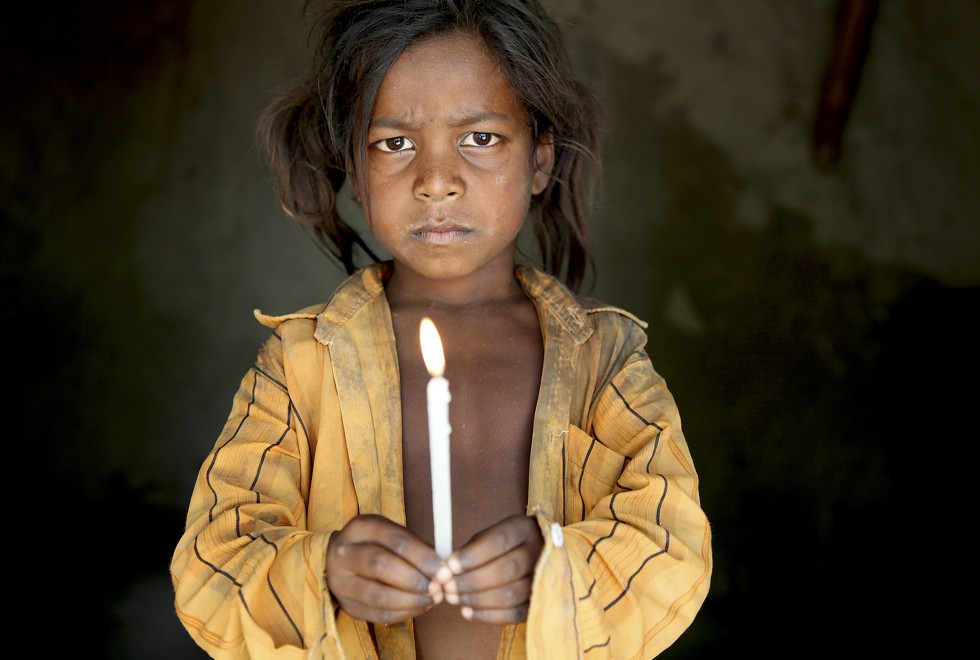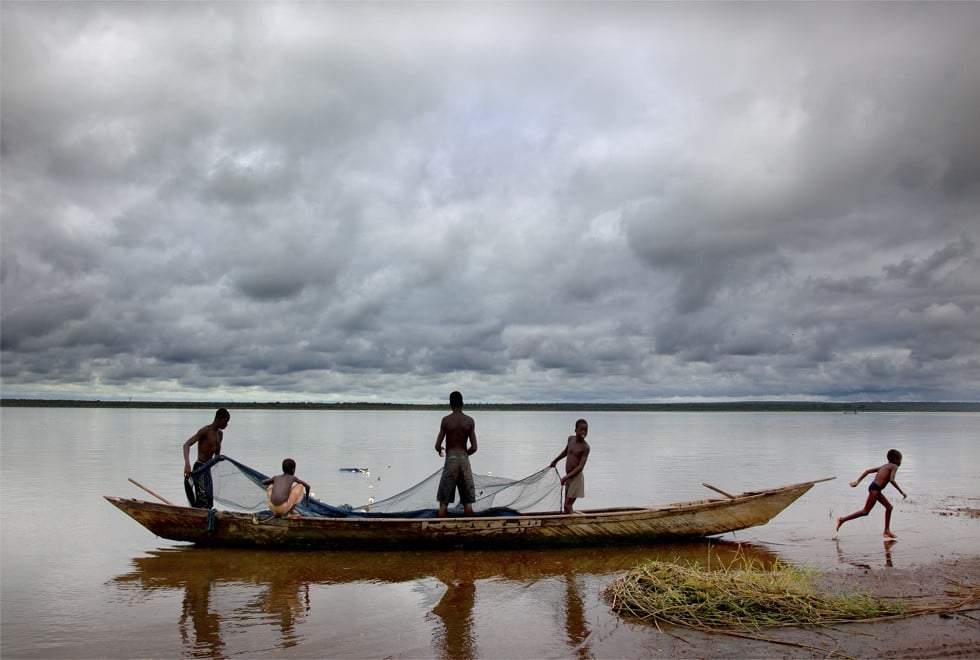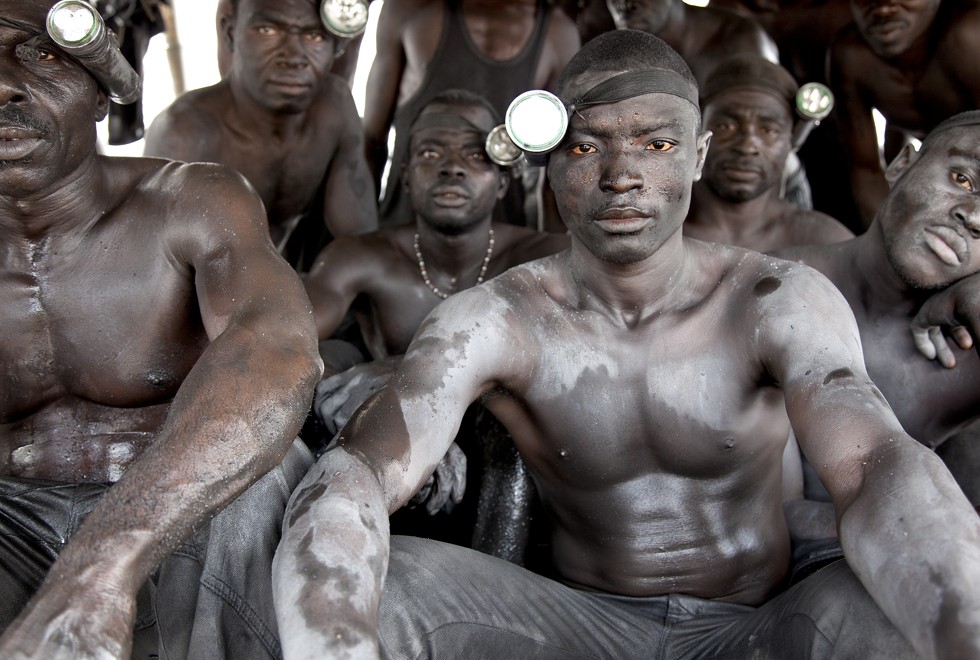
Modern slavery, and the American photographer who is doing her bit to abolish it
At last month’s Thomson Reuters Anti-Slavery Summit the audience was spellbound by the stories, and images, of humanitarian photographer Lisa Kristine. Sarah Lazarus spoke to her about her work
Lisa Kristine’s photographs are mesmerising. She has an extraordinary ability to make people look compellingly beautiful – even those who are living as slaves in horrific situations. We meet at the Asia Society, the venue for August’s Thomson Reuters 2017 Anti-Slavery Summit. The first question I ask is, what’s her secret – how does she do it?
“I feel like I arrive to people with an open heart, and that creates a sense of comfort that allows people to show their true, authentic selves to me,” she says. “My aim, always, is to show their dignity. My work is born of trust and intimacy.”

Like most people, Kristine was only dimly aware of the existence of modern slavery. She first learned the true scale of the problem while exhibiting her work at the Vancouver Peace Summit, in 2009. According to the Global Slavery Index, in 2016, about 45.8 million people were trapped in some form of slavery, with 168 million children engaged in labour. There are more enslaved people now than at any time in history.
“When I learned about the modern slave trade it hit me like a freight train,” says the American, who built her career taking photos of remote landscapes and cultures.
“When I was young, my mother had a bookshelf in the corner filled with big books on anthropology and copies of National Geographic,” she says. “I’d sit by myself and leaf through the photos of people covered in mud, and in feathers, and to me they looked like the Earth. From my perspective they seemed anchored, unshakeable. My childhood was quite stressful and they had a solidity that I wanted to have, too. I remember deciding that, when I was older, I would go and meet them.”
Kristine’s quest would take her, and her camera, to more than 100 countries on six continents. She made many visits to nations where slavery thrives, which was why the revelation at the Peace Summit came as such a shock.
“My entire career is based on observing people, and yet I’d totally missed it. So I was completely thrown. I was angry with myself and I couldn’t sleep at night.”
Kristine flew to Los Angeles to meet Peggy Callahan, co-founder of charity Free the Slaves, and offered to help. With the support of the NGO, she spent a year travelling the world, photographing enslaved people. The body of work she produced was published in two books, Slavery (2010) and Bound to Freedom (2017), and shown around the world as the “EnSlaved” photographic exhibition. Kristine’s first knowing encounter with slaves was in the brick kilns of India.
Can you imagine? They’ve been stolen from their parents, taken away from everything they’ve ever known, sold to a stranger who treats them harshly, trafficked hundreds of miles, and forced to work in a life-threatening situation
“I’d passed brick kilns for many years while working in India, but I’d never been inside and I’d had no idea people were enslaved in them,” she says. “It was like walking into Dante’s Inferno. It’s mind-blowing. The temperature is over 50 degrees Celsius. I watched slaves stacking bricks on their heads to carry them to nearby trucks. Each brick weighs just under 2kg, and they carry up to 18 at a time.”
The slaves work 16 hours a day, smothered by clouds of choking dust, with no breaks for food or water.
Inside a kiln, the metal parts of Kristine’s camera became scorching hot and it stopped functioning.
“I had to ask our van driver to cool it down under the air conditioner,” she recalls. “I was well aware that my camera was receiving much better treatment than the kiln workers.”
In the Nepalese Himalayas, Kristine witnessed children carrying stones that weighed more than they did.
“It would take several other children to hoist the stones onto their backs. And I’d wonder, ‘Is that the slate that’s in my bathroom?’ Because we are all unknowing participants in slavery.”
In Ghana, she travelled to Lake Volta. On arrival, she asked her guides if she could pop down to the lake to take a look.
“There was a fishing boat with young boys on board, and I assumed it was a group of brothers and cousins and friends. I said, ‘Oh that’s cool’. And my guide said, ‘No, those children are slaves.’”
As she realised the truth, Kristine experienced a moment of self-forgiveness.
“This helped me understand why I hadn’t noticed it before. Slavery is often hidden in plain sight. It’s right in front of us, but we don’t know what we’re seeing, and we have no reason to question it.”
Tens of thousands of children are enslaved in Ghanaian fishing villages. Most come from poor, vulnerable families.
“A trafficker – often someone who knows the family – comes along and says they have an aunt or cousin who will send the child to school. All they’ll need to do is help around the house a bit. So they let them go, because they want a better life for them. And then they disappear.”
With their tiny, nimble fingers, children excel at pulling debris out of fishing nets and untangling knots.
“The worst thing,” Kristine says, “is that they work on the lake, all day every day, but they are not taught how to swim. If the nets catch on tree limbs, they literally toss the children in the water to go and untether them. Every child I met knew another child who had drowned.
“Can you imagine? They’ve been stolen from their parents, taken away from everything they’ve ever known, sold to a stranger who treats them harshly, trafficked hundreds of miles, and forced to work in a life-threatening situation. It breaks my heart to think how petrified they must feel.”
She also visited Ghana’s illegal gold mines. Kristine explains that Ghana is home to a number of legitimate gold mines, where people go to look for work, hoping to strike it rich.
“When they arrive, they learn that they need a licence, and to get that they need to be educated and to pass tests. At this point, a trafficker offers them a small loan and a job at an illegal gold mine. They happily accept. They don’t realise that the interest rate on the loan is so high that there’s no possibility of ever paying it off.”
The miners descend 50 metres down a makeshift ladder made of tree limbs, with only an empty sack, primitive tools and a head torch tied on with an elastic band. They work 48- to 72-hour shifts. Kristine climbed down to photograph them.
“It felt like being, literally, in the depths of human misery. It’s pitch black. The men are dripping with sweat and constantly coughing. There’s no aeration. They don’t last long – people die down there all the time.”
Climbing back up is also perilous.
“They’re exhausted and carrying a heavy sack full of stone, so it’s easy to slip and fall. They’re easily replaced.”
How did she get access to these places? Kristine says Free the Slaves introduced her to abolitionist groups in each country who organised her visits. She was given strict guidelines.
“I couldn’t offer to help, or give money, or interfere in any way, because of the danger to everyone involved.” She was instructed not to show emotion. “I learned my lesson early on. At the kilns in India there were women and elders carrying huge piles of bricks. They had dead eyes. I started to cry and my guide shook me and said it wasn’t acceptable – it wasn’t safe for them or for me. And I realised that I had to put my trust in the good abolitionists I was with. They would liberate these people, and I would do what I can do, which is to bear witness with my photos.”
What does she hope to achieve?
“I created this body of work because seeing is believing. Photographs transcend language – you have a visceral reaction to a photo. I knew I had the capacity that no matter how terrible people’s circumstances, I would be able to photograph their dignity. And that a viewer, standing in front of that image, would feel a connection with that person.”
Other photographers focus on portraying the horror. That’s not her thing.
“I want viewers to see enslaved people as fellow human beings, and to feel that unity and shared humanity. And then to help bring about change”.









